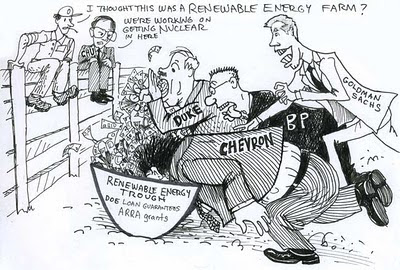Desert Conservation Languishes As Industrial Uses Expand

As the Bureau of Land Management (BLM) continues to facilitate the march of industry into relatively remote corners of America's desert wildlands, efforts to set aside these natural treasures are slow going as Congress has been jammed up by partisan squabbling, and the President has been shy about using his authority under the Antiquities Act to designate monuments. Waiting for conservation by executive or legislative action may seem worthwhile when you consider that those protections will be more permanent, but what seems to be most lacking in our deserts is proactive conservation through the land management process administered by the BLM; other than islands of critical habitat designated for some endangered species, land use management plans seem to do little to prevent industrial-scale development on land considered to hold important wildlife, scenic and recreation values. New Mexico Gets a Monument, and May Get A Second This Year Despite the President's overall relu...




